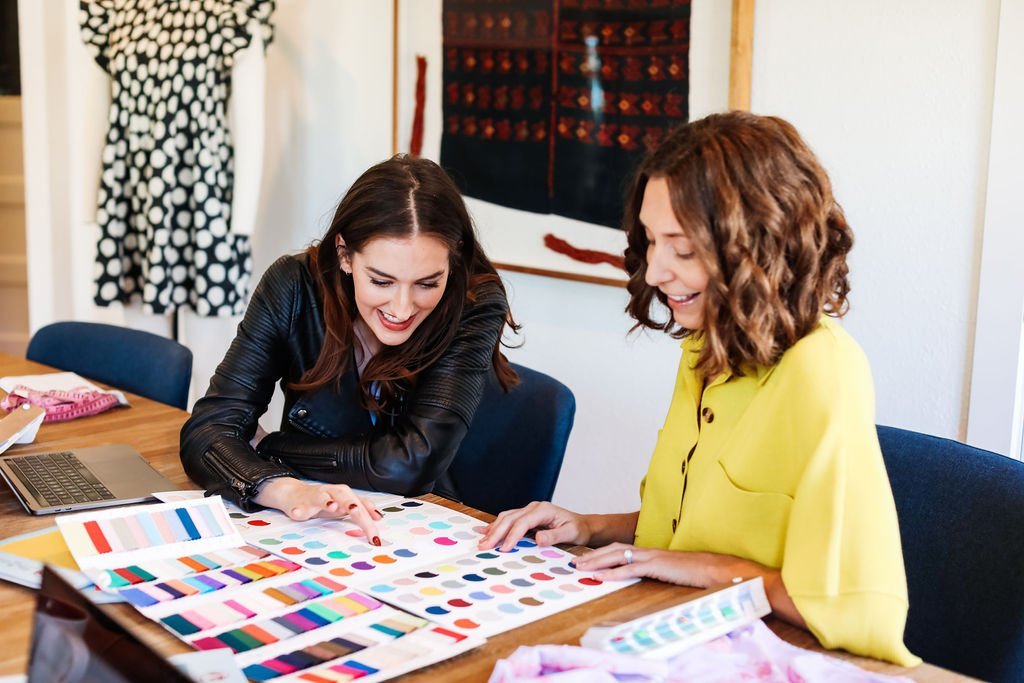10 Production Mistakes Clothing Brands Should Avoid
Within my 17+ years in the fashion industry, I’ve found myself giving the same feedback time and again to brands in all phases of business.
No matter the production quantity - 50 units or 500,000 units - the following advice can be applied to streamline processes, improve communication, and save time and money for your brand.
Here are the top 10 mistakes I see apparel brands make and how to avoid them moving forward:
#1 NOT HAVING A PROFESSIONAL TECH PACK
Tech Packs include detailed descriptions of the product for your clothing manufacturers to follow when developing your product. It contains a Bill of Materials (BOM) which lists out all of the trims included with the product, and every material your product is made from. A tech pack will include the design of your product with technical sketches, detail-oriented views, design comments, specification measurements, as well as fit notes.
A tech pack is similar to a cooking recipe. Without having all of the ingredients and knowing the correct measurements, your end product may be a mystery. Apparel manufacturers can better execute when they have Tech Packs with clear direction and a format that leaves little up for interpretation.
#2 NOT DOING PRODUCT DEVELOPMENT WITH YOUR GARMENT MANUFACTURER
Product Development (PD) can be a complex, lengthy process. Brands frequently contact me to find a sample maker or pattern maker. While working with these specialized service providers can be beneficial, you’ll still need to go through the sample and pattern process with the factory producing your garments.
You’ll end up going through the PD process again and paying for it twice.
Doing as much with the factory as possible will save you money and time, and will help you maintain a relationship with your production partner.
#3 NOT SENDING SAMPLES TO A FACTORY FOR REFERENCE
Sending reference samples alongside your tech pack for the manufacturer gives them a better understanding of the product you’re aiming to make. Having physical samples on hand to refer to for fabric, construction, fit, trims, etc. will assist the factory in nailing down the details - big and small.
I can tell you from experience, shipping samples from the beginning will give you approved-to-production samples faster than without sending fabric and fit references.
#4 EXPECTING TO GO TO PRODUCTION AFTER ONE ROUND OF SAMPLES
Regardless of the tech pack or reference samples sent, expect at least two rounds of samples before approving the style for production. It’s possible, but rare, to approve to bulk production after one iteration.
It often takes multiple round of testing, reviewing, and changes to ensure your product is ready for production. The point of a prototype sample is to analyze and adjust where needed for the next sample. The further into the production process you are, the more difficult it is to make changes.
#5 MAKING CONTINUOUS CHANGES TO PRODUCTS DURING SAMPLING
It can be hard to decide on all of the details of a design, especially if you’re a brand still getting an understanding of the product you want to make, or if you’re shifting direction. You may change your mind throughout the sampling process, or come up with a new idea right before production. While tempting, most updates should be addressed in the first sample review. As mentioned, the further into the sampling process you are, the more complicated making changes becomes.
With your second sample, feel free to review the design changes you made and make tweaks you’d like to see before production. However, you should not make major design or fabric changes at this point.
If you’re on your 3rd or 4th sample round, redesigning might be to blame. The factory has to spend more time adjusting your product and can cause confusion and create miscommunication in production. Not to mention sample costs will add up. To avoid the endless cycle of changes, try to complete the idea development phase before going into sampling.
#6 REQUESTING CUSTOM COLORS FOR SMALL BATCH PRODUCTION
If you’re producing a small quantity production run, expect to select fabrics in available colors. Not only can you order the exact amount of material needed for your order, you’ll save money, too.
Designers often request to have their designs to be in very specific Pantone shades. Instead, I recommend finding your material first, then building your color palette off the available shades in the market. You can still put together a unique color story, but at the smaller quantity you wanted and for less money.
#7 NOT KNOWING WHAT FEES ARE INCLUDED IN PRICING
Having a global network portfolio, I’ve learned that almost every country has a different structure for cost and payment. When getting quotes with multiple vendors, it’s vital to know what services are included in your pricing. One partner may not charge for services the same way another supplier does.
There’s a lot that goes into international production pricing. Start with knowing the difference between FOB and LDP prior to a costing conversation.
#8 NOT HAVING A MARKETING BUDGET
It’s easy to get lost in the manufacturing process, but you can’t forget about the funds that will need to go into marketing once your product is completed.
A massive marketing budget in the beginning isn’t necessary. Try testing multiple strategies at first, and see what sticks. Either way - focus on your target audience and plan to set aside a budget to increase your brand’s exposure for your launch and for each drop.
#9 FOCUSING ON ONLY ONE SALES CHANNEL
Brands often plan to sell directly to consumers only. While this will provide you with the highest margin, it often doesn’t end up bringing in as many sales as desired, and it can take a while to see real growth or progress.
Brands should get their foot in the door with a variety of sales channels. Track customer engagement with your products across each channel. You may be surprised by which channel is working best for you.
#10 NOT WORKING WITH THE EXPERTS
Whether you’re launching for the first time or have been in the industry for a while, but want to improve your processes and product, look to the experts. Do the important research - look at their content or request their help. Working with partners who have experience will be there to guide you, helping you avoid costly mistakes and will get you a quality product, on your timeline.
There’s so much to learn in every phase as a fashion brand. These are mistakes to learn from. Running with some of the tips above will lead to better samples, less rounds of samples, more knowledge on the clothing manufacturing process, and an effective sales strategy foundation for your business.





